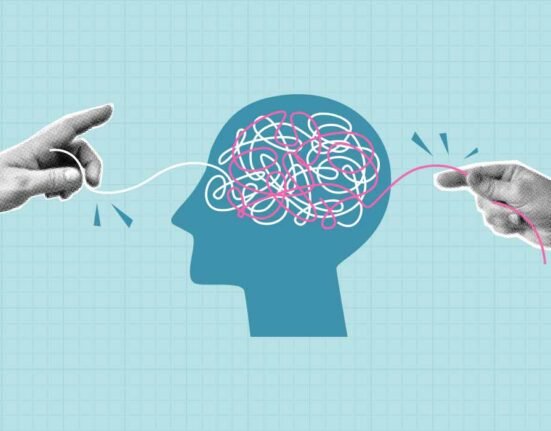Few approaches have been as powerful and lasting as that of Rational Emotive Behavioural Therapy (REBT) in the vast field of therapy. Developed by Albert Ellis in the 1950s, it is an offshoot of Cognitive Behavioural Therapy, which helps individuals overcome emotional problems by changing the patterns of thought.
REBT Functions on the Stoic idea that it is not the event but our thought about the event that shapes an individual’s emotional experience. This change of emphasis from the outside to the inside provides people with the ability to remake their emotional lives by discovering, combating, and altering irrational thought patterns. One of the central tools in REBT is the ABCDE model, a systematised method that assists one in analysing emotional responses and reframing cognitions.
The Foundations of REBT
REBT emerged as a response to the limitations of psychoanalysis, which, in Ellis’s opinion, typically took too long and emphasised previous experiences too much. Ellis suggested that individuals could make emotional changes more quickly by facing and altering their irrational beliefs in the present moment. R.E.B.T. incorporates many elements from C.B.T. but holds some fundamental differences, like its emphasis on rigid internal demand, as thoughts with words like must or should. Ellis believed these beliefs led to an impractical approach towards life and led to dysfunctional emotions. Instead of merely soothing these emotions, REBT asks us to examine the thinking that causes them and replace it with something healthier, and for that, it follows a systematic model that changes these patterns step by step.
The ABCDE Model: A framework to alter Dysfunctional patterns
The ABCDE model not only helps in diagnosing the roots of faulty thought patterns but is also a corrective tool. It enables one to track their emotional responses back to the thoughts that are driving them, and more crucially, indicates how to modify those thoughts so that suffering may be reduced.
A – Activating Event
The Activating Event is the situation or experience that triggers an emotional response. This might be something external, like losing a job or internal, like a memory.
This event is not the root cause of emotional turmoil.
B – Beliefs
The Beliefs we hold about the activating event, not the event in itself, determine how we feel.
These beliefs are unproblematic if they are rational, but problematic if irrational.
An irrational belief is extreme and fixed and tends to be self-defeating, while a rational belief is realistic and flexible.
And when we have such inflexible expectations, even minor obstacles can feel like major disasters.
C – Consequences
The Consequences are the emotional and behavioural outcomes of our beliefs. Irrational beliefs lead to unhealthy negative emotions such as anxiety, depression, guilt, or anger, which cause avoidance behaviour, withdrawal, or aggression. For example, believing “I must succeed or I’m a failure” can turn a simple job rejection into a self-worth crisis.
D – Disputing Irrational Beliefs
- The first three steps of this model help in identifying the root cause of the problem. Disputing irrational beliefs is the transformative part of this model. R.E.B.T. suggests disputing irrational beliefs using logic and pragmatic thought.
- One must ask themselves that is this belief based on facts or assumptions? Or what are the consequences of this thought process?
- Disputing is more about rational thinking than positive thinking. This step aims to break down the irrational thoughts to get a clearer picture and replace it with a rational perspective.
E – Effective New Beliefs and Emotions
- Once the irrational beliefs are challenged, individuals are encouraged to develop effective New Beliefs that are more realistic and empowering, leading to healthier emotions and actions.
- For example: “Not getting a job may be disappointing, but rejections are part of life. It could be a learning opportunity for me.”
- Such a belief doesn’t deny the pain but contextualises it, which allows room for mental growth.
Advantages of the REBT Approach
REBT and the ABCDE model offer several practical advantages:
- The step-by-step nature of it provides a structure and subsequently provides clarity and makes it easy to apply in daily life.
- It empowers the person by placing the control back in the hands of the individual.
- By targeting core beliefs, REBT aims for lasting change in the patterns rather than temporary relief.
Criticisms and Limitations
- The system doesn’t take into account factors beyond cognition and perception as symptoms of mental illness. For example, although being helpful with issues like anxiety and depression, faulty thought patterns don’t need to be the root cause of them.
- The model requires a level of self-reflection and cognitive effort that may be difficult during emotional crises or for individuals with lower insight.
- The model gives power in the hands of the therapist as an expert to provide direction rather than a helping hand in the process of self-healing. This could be seen as both an advantage and a limitation of this model.
Conclusion
In a time where emotional challenges are increasingly common, REBT reminds us of something both radical and reassuring: we may not control what happens to us, but we do have the power to choose how we interpret and how we respond to it. Whether used in therapy or self-help, the ABCDE model is more than a technique — it’s a life philosophy rooted in resilience, clarity, and choice.
FAQs
1. What is the main goal of REBT?
The primary goal of Rational Emotive Behaviour Therapy (REBT) is to help individuals recognise, dispute, and replace irrational beliefs that lead to emotional distress. By cultivating more rational and flexible beliefs, individuals can achieve better emotional health and behavioural outcomes
2. How is REBT different from CBT?
REBT is considered one of the earliest forms of Cognitive Behavioural Therapy (CBT). While both focus on the connection between thoughts, emotions, and behaviours, REBT places a stronger emphasis on identifying and challenging irrational beliefs rooted in rigid demands (e.g., “I must,” “They should”). CBT, in contrast, often explores automatic thoughts and incorporates more behavioural techniques.
3. What kind of issues can the ABCDE model help with?
The ABCDE model is effective for a wide range of emotional and behavioural concerns, including:
- Anxiety and panic
- Depression
- Anger management
- Low self-esteem
- Perfectionism
- Relationship problems
- Stress-related issues
4. Is REBT suitable for self-help, or does it require a therapist?
While REBT can be highly effective in a therapy setting, many people successfully use its principles for self-help. The ABCDE model is structured and accessible, making it suitable for guided self-reflection, journaling, or personal development, especially when supplemented with REBT workbooks or credible resources.
5. What makes a belief “Irrational” in REBT?
In REBT, a belief is considered irrational if it is:
- Rigid and extreme (e.g., “I must never fail”)
- Not based on factual evidence
- Leads to unhealthy emotions or behaviours
- Prevents problem-solving or acceptance
Irrational beliefs often contain absolute terms like must, should, or have to, and they tend to amplify distress unnecessarily.
6. Can REBT help with chronic or deep-rooted emotional patterns?
Yes. One of REBT’s strengths is its focus on core beliefs, which are often the root of long-standing emotional patterns. By targeting these beliefs and replacing them with healthier philosophies, REBT aims for sustainable, long-term emotional change rather than just short-term symptom relief.
References +
- Rational Emotive Behavior Therapy. (n.d.). Psychology Today. https://www.psychologytoday.com/us/therapy-types/rational-emotive-behavior-therapy?
- RATIONAL EMOTIVE BEHAVIOR THERAPY: ABCDE MODEL – Altius Mind Institute. (n.d.). https://www.altiusmindinstitute.com/blog/rational-emotive-behavior-therapy-abcde-model/
- REBT – Albert Ellis Institute. (n.d.). Albert Ellis Institute. https://albertellis.org/rebt-cbt-therapy/













Leave feedback about this